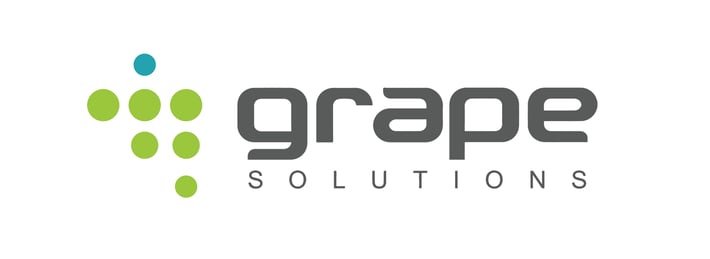About Robotic Process Automation (RPA)

- RPA
- SOFTWARE ROBOT
- RPA BUDAPEST
- UIPATH
- ROBOTIC PROCESS AUTOMATION
Easier than you think...
Robots are widely used in the software industry and are used for the same purpose as in the manufacturing industry: to free people from repetitive monotonous tasks while increasing efficiency and reducing errors.

To maintain or increase their competitiveness, companies must continuously adapt their processes to their business tasks. When process steps are digitized and transformed to be used by computer applications, applications and processes interact inseparably with each other. In highly complex systems, this interaction can create problems.
The development of a complex enterprise application is time-consuming. During implementation, business processes are often transformed, and this transformation does not always benefit the business processes; on the contrary, the processes are transformed according to the requirements of the system to be implemented. As a result of the slow and expensive implementation, many correlating business processes are put on hold, and unmet business needs overtake the stagnant system.
To improve this situation, companies try to develop applications internally, thus further increasing the complexity of their business systems.
And the result?
The result is inefficient and inflexible hybrid systems with high operating costs that certainly cannot be used for process automation.
Simplified solution
Process automation has become a basic requirement. The workforce has to deal with value-added processes so that companies that carry out monotonous transactions on a large scale lose their competitiveness. Robotic process automation (RPA) is the key to solving such a problem. An RPA solution is needed that provides easy connectivity to existing systems, has low resource requirements, is easy to use and can be deployed quickly. The UiPath based solutions provided by Grape Solutions meet all these requirements. With Grape's RPA solutions, existing systems can be easily managed (via screens) and business tasks can be automatically processed around the clock. The system requirements for the RPA solution are met by an average desktop computer. If necessary, RPA can also be operated on virtual machines. The implementation of the RPA solution is simple, usually faster and easier than implementing enterprise software.
Getting to know all existing business processes is the first step in developing automated processes.
Usually, no complex technical system descriptions or IT knowledge is required, the user can easily follow and present the given business process, while the automation is performed and can be followed front end within the existing systems.
 Machine cooperates with human
Machine cooperates with human
A thorough inspection is conducted before Grape Solutions optimizes and gets the process ready for automation, and then, after customer approval, the actual development of the process begins. During and post-testing, the involvement of users might be required as they have in-depth knowledge of the process and since the robot only performs tasks and in a way it is programmed for. After testing and going live Grape Solutions undertakes the continuous operation of the system. UiPath technology enables fast adoption of existing processes to new requirements within days and complete process automation only in a couple of weeks.
The so-called unattended RPA bots can be run independently based on a defined logic requiring no resources. Unattended RPA bots operate on a preset schedule, or as triggered by logic in the process flow. Thus, the complete automation of complex processes can be easily solved in the background. In some cases, user can parallelize tasks completion by automating sub-processes. In such a scenario, it is the user to initiate the process and while the bot is busy completing the process user can handle value-added tasks. When the sub-processes are completed, they can be combined either by the user or by another automation process.

The results speak for themselves
Using the RPA solution of Grape Solutions resulted in a significant optimization at one of our partners operating CRM systems. By automating the contract registration system, the RPA bots automatically processed tens of thousands of contracts, creating a precisely up to date system. The use of RPA bots not only updated the system but also enabled saving an average of 5 FTE (full-time employee) on a monthly basis. The freed workforce was redirected to other areas where human work was required. The other benefit of RPA bots was the significant decrease, almost to 0, in the number of generated errors as the manual postprocessing of contracts was minimized.
The use of Grape’s RPA solution enables to process and respond to all paper-based incoming requests within a business day. The automated process performs the necessary administration in the system and ensures that the required form gets sent by post. The elimination errors significantly increased efficiency and reduced processing time to 1 day.
Outcome of Collaborative Work
Successful implementation requires continuous contribution and involvement of the customer. It is highly recommended to automate processes in a wider range within a partnership instead of focusing on a single process. Grape Solutions working closely with customers evaluates and determines the processes to be partially or completely automated during the business process reengineering phase. UIPath based systems are user-friendly environments that enable users to perform simpler process automation after completing short training. RPA solution helps increase efficiency and perform tasks faster and more accurately.
About Grape Solutions
Comprehensive technology developments, digitization, business intelligence and testing services

- 140+ Professionals
- 100+ Unique business applications developed
- 91% Returning customers

Share this post on social media:
Posts by Tag
- IoT (17)
- Smart cities (16)
- E-mobility (14)
- Energy Management (10)
- Mobility (9)
- Software development (9)
- Marketing automation (6)
- RPA (6)
- Robotic Process Automation (6)
- electric vehicles (6)
- Internet of Things (5)
- IoT solution (5)
- Marketing software (5)
- Smart Building (5)
- Business Intelligence (4)
- Custom applications (4)
- IoT platform (4)
- Uipath (4)
- electric charging (4)
- IoT devices (3)
- Properties (3)
- AI (2)
- BI (2)
- Montu (2)
- Multi-device functionality (2)
- Omnichannel (2)
- RPA Budapest (2)
- Smart city (2)
- UX design (2)
- app development (2)
- artificial intelligence (2)
- crm (2)
- crm software (2)
- electric charging station (2)
- machine learning (2)
- marketing campaign (2)
- optima (2)
- API Testing (1)
- Agriculture (1)
- Automated Testing (1)
- BYOD (1)
- EV (1)
- Energy Communities (1)
- Event insights (1)
- Event report (1)
- Green IoT (1)
- HR (1)
- IT Outsourcing (1)
- ML (1)
- Power BI (1)
- Resource Management (1)
- Smart Home (1)
- Smart Office (1)
- TaaS (1)
- UX/UI Design (1)
- Xamarin (1)
- cloud (1)
- cloud computing (1)
- cross-selling (1)
- data driven marketing (1)
- digital twin (1)
- dynamic customer segmentation (1)
- esg (1)
- inbound marketing (1)
- industry 4.0 (1)
- onprem (1)
- onpremise (1)
- scalability (1)
- software robot (1)
- testing as a service (1)
- upselling (1)
Recent Posts
Read On

- RPA
- ROBOTIC PROCESS AUTOMATION
The essential role of Robotic Process Automation (RPA) in Lean Management
Even if we live in a world where change is crucial for next-level developments, standardization is still necessary to save the customary quality of products or services. Lean management focuses on providing the highest quality of outputs with the lowest failure rate. It is precisely why RPA robots...

- RPA
- ROBOTIC PROCESS AUTOMATION
Trends and use cases that will evolve RPA (Robotic Process Automation) in 2023
2022 has been an exciting year for robotic process automation, starting with the emerging phenomenon of intelligent automation through the expanding number of executing automation in the Cloud. Many trends in 2022 were primarily adaptive for medium-sized companies but they encouraged large...

- RPA
- UIPATH
- ROBOTIC PROCESS AUTOMATION
Which processes can be automated in banking and financial services?
The Banking and Financial industry, due to technological advancements, is continuously changing. The sector is under pressure to lower costs while companies need to provide the highest quality services to their clients to remain competitive on the market. Robotic Process Automation (RPA) is a...



